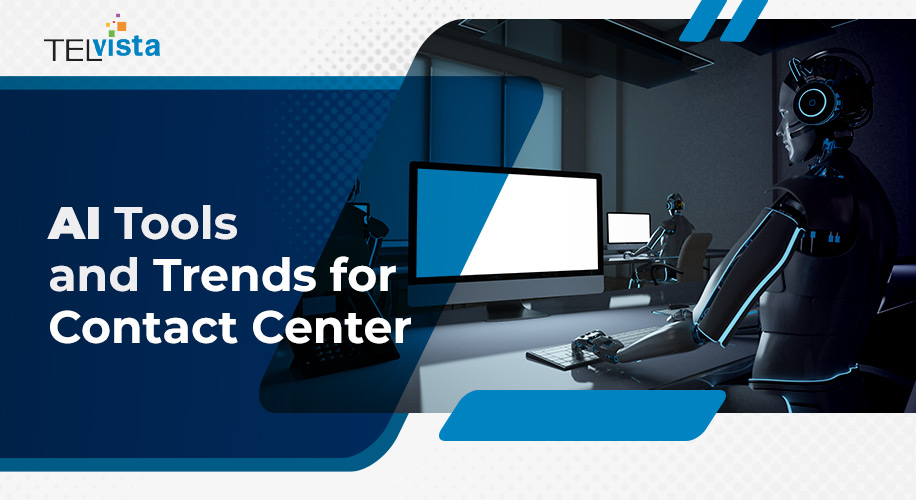Since almost every business relies on contact center services to provide efficient customer support around the clock, AI development, and automation has become the focus of all technological and digital discourse this year. Contact center automation tools are all the buzz when it comes to contact center optimization.
Contact Center Automation Tools & Measures Are the Way Forward
According to the US Census Bureau, an estimated average of four million new startups emerged over the past years.1 Along with company growth and staffing challenges, many of these businesses rely on outsourcing solutions for customer support, increasing the load on contact centers worldwide. This is where automation comes in handy. Here are some of the most suitable AI-driven tools and automation measures contact centers can adopt:
Intelligent Virtual Assistant (IVA)
Similar to how BOTs are used in chat, intelligent virtual assistants are AI-enabled software that can perform tasks or services for an individual based on commands or questions over the phone. Virtual Assistants can use either keypad inputs or speech recognition and respond via synthesized voice-directed dialog. Users can ask their assistant’s questions, look at account information, trigger processes and provide updates to callers. They can also be used for scheduling, sending emails, SMS, etc.
Realtime Process Automation (RPA)
RPA is a great solution to optimize call center resources so as to minimize or remove unnecessary costs.
It is a form of business process automation that can run repetitive tasks for agents including account look-ups, calculations, verifications, and other AI functions performed by BOTs. Scheduling is another massively tedious, and time-consuming task. RPA takes this responsibility off agents and supervisors allowing them to focus on other more important and/or high-priority tasks.
RPA enables the ability to complete tasks with high speed, volume, and error-free. These solutions are also well suited for highly personal, identifiable information tasks to reduce the risk of fraud and data misuse.
AI-Driven Quality Assurance
Quality assurance involves inspecting standard processes, operations, and services to make sure that they are up to the mark. It is one of the biggest determinants of company credibility. The execution of every single task needs to meet the quality guideline set by the company.
A busy, high-volume call center has very complex and overlapping operations. These can include agent conversations, dialing tactics, and dispositions, as well as other tasks. Tracking multiple tasks and ensuring efficiency as well as zero errors is humanly impossible. Plus, most of these tasks are highly tedious and boring to humans. This is why automation is becoming the need of the hour in call centers, to handle the logistical, mathematical, diagnostical, or technical aspects of work.
AI can be used to create QA scorecards to rate agent performances, making them accountable for working responsibly and also incentivizing better performance. Not only can AI and automation take QA to the next level but can also supplement all your contact center processes, and overall workforce management solutions.
Real-Time Transcription
There are some situations in contact centers where human intervention is necessary and inevitable, such as when newly recruited agents need training, or when a customer wants to speak to the manager directly.
Real-time automatic transcription is a very helpful tool in managing workload at contact centers. It can allow both managers and agents to create a complete diagnosis to rectify errors and focus on points of improvement. Additionally, the uses of call center transcripts go well beyond detailed and focused coaching sessions, or personalized customer care. Thanks to real-time transcription, managers are given the provision to sift through multitudes of conversations to get a better understanding of customer preferences and choices. It also allows them to determine behavioral trends within their teams.
Predictive Analytics
Predictive Analytics uses historical and current data to gain insights about future outcomes. Call centers are realizing their potential and are leveraging it to transform the way they interact and engage with customers. The technology has been developed into different models, each executing a unique function:
- Forecast models: Estimate future outcomes based on the entered variables
- Classification models: Sort data into categories (particularly yes/no)
- Outlier models: Highlight anomalies that defy predictions, and alert users accordingly
- Time series models: Account for evolving conditions like holidays, seasonal downtimes, peak seasons, etc.
- Clustering models: Sort information into smaller, targeted groupings
Predictive analytics can help prioritize calls, especially follow-up calls, and improve customer retention. Moreover, by replacing the traditional manual assessment system with PA system, the agents’ evaluation time can be drastically reduced from weeks to days. By leveraging the insights from predictive analytics, contact centers can enhance agent performance, service quality, and operational efficiency.
The Impact of Contact Center Automation
Remote workforce
Ever since these contact center automation trends have made it to the fore, a lot of numerical or technological grunt work such as making records, diagnostic and predictive analysis, or tracking and saving changes has been taken over by bots or AI. This enables companies to offer the option of working remotely even from their homes. This results in a wider scope of talent pools as people from different regions can be recruited, reduced operational costs, and expansion of the geographical locations service is provided.
An automation trend which has made this drastically easier is the virtual contact center software, an effective cloud-based tool that simulates the functions of a call center online and can be deployed or used remotely from anywhere in the world.
Self-service
Another huge service that contact center automation tools have been providing customers and contact centers alike is that of self service. For the past few years, contact centers have had automated operators that receive calls and reroute them to the respective departments or customer service representatives. They are one of the most essential elements of a call center. Even the most basic IT support company can program these. However, the benefit that they provide is endless- people can self serve rather than rely on human operators to walk them through standard procedures.




